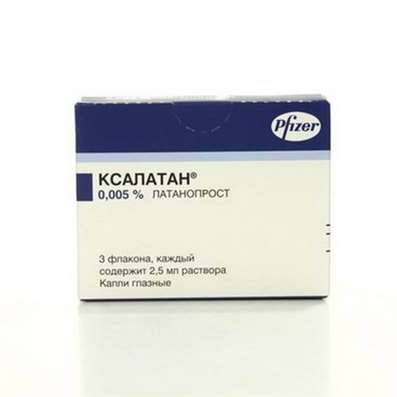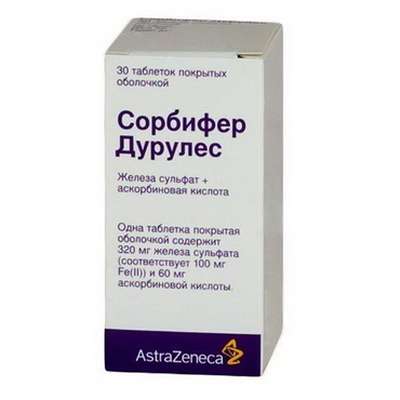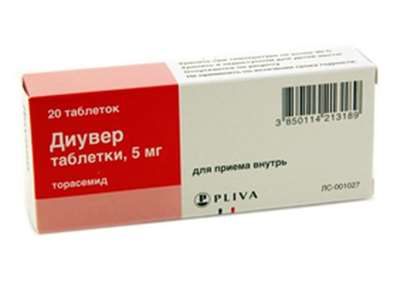Instruction for use: Betamaks
I want this, give me price
Packing: tablets
Active substance: Sulpiride
ATX
N05AL01 Sulpiride
Pharmacological group:
Neroleptics
The nosological classification (ICD-10)
F05 Delirium not caused by alcohol or other psychoactive substances: Delirious condition
F20 Schizophrenia: Schizophrenic Conditions; An exacerbation of schizophrenia; Schizophrenia; Chronic schizophrenia; Dementia praecox; Bleuler's disease; Psychotic discordant; Dementia early; The febrile form of schizophrenia; Chronic schizophrenic disorder; Psychosis of the schizophrenic type; Acute form of schizophrenia; Acute schizophrenic disorder; Cerebral Organic Insufficiency in Schizophrenia; Acute attack of schizophrenia; Schizophrenic psychosis; Acute schizophrenia; Sluggish schizophrenia; Sluggish schizophrenia with apathoabulic disorders; Acute stage of schizophrenia with agitation
F32 Depressive episode: Adynamic subdepression; Astheno-adynamic subdepressive states; Asthenoadressive disorder; Astheno-depressive disorder; Asthenodepressive state; Astheno-depressive state; Major Depressive Disorder; Vyaloapatichesky depression with retardation; Double Depression; Depressive pseudodement; Depressive illness; Depressive mood disorder; Depressive disorder; Depressive mood disorder; Depressive state; Depressive disorders; Depressive syndrome; Depressive syndrome larviated; Depressive syndrome in psychoses; Depressed masks; Depression; Depression Depletion; Depression with the phenomena of inhibition within the framework of cyclothymia; Depression is smiling; Involutional depression; Involutionary melancholy; Involutional depression; Manic-depressive disorder; Masked Depression; Melancholic Attack; Neurotic depression; Neurotic depression; Shallow Depression; Organic depression; Organic depressive syndrome; Simple depression; Simple melancholic syndrome; Psychogenic depression; Reactive depression; Reactive depression with moderate psychopathological symptoms; Reactive depressive states; Reactive depression; Recurrent depression; Seasonal depressive syndrome; Severostatic depression; Senile Depression; Symptomatic Depression; Somatogenic depression; Cyclotymic depression; Exogenous depression; Endogenous depression; Endogenous Depressive Conditions; Endogenous Depression; Endogenous depressive syndrome
F48 Other neurotic disorders: Neurosis; Neurological diseases; Neurotic disorders; Neurotic condition; Psychoneurosis; Anxious-Neurotic Conditions; Chronic neurotic disorders; Emotional reactive disorders
H81.0 Meniere's disease: Disease / Meniere's syndrome; Meniere's Disease; Meniere's syndrome; Labyrinth hydrops; Endolymphatic hydrops
H81.2 Vestibular neuronitis: Vestibular neuritis; Vestibular neuritis; Cochleovestibular neuritis
H81.3 Other peripheral vertigo: Vertigo of peripheral origin
H81.4 Vertigo of central origin: Dizziness of labyrinth origin; Vestibular Dizziness; Dizziness of vascular origin
I67.9 Cerebrovascular disease, unspecified: Lacunar status; Angioedeopathy; Arterial angiopathy; Hypoxia of the brain; Encephalopathy; Vascular and age-related brain disease; Coma in violation of cerebral circulation; Metabolic and cerebral disorders of the brain; Disturbance of blood supply to the brain; Violation of cerebral circulation; Dysfunction of the brain; Dysfunction of the cortex; Violation of cerebral circulation; Insufficiency of cerebral circulation; Acute insufficiency of cerebral circulation; Acute disorders of cerebral circulation; Lesion of cerebral vessels; Progression of destructive changes in the brain; Disorders of cerebral circulation; Cerebral insufficiency syndrome; Vascular Brain Failure; Vascular encephalopathy; Vascular disorders of the brain; Vascular lesions of the brain; Functional disorders of the brain; Chronic cerebral ischemia; Chronic circulatory failure; Chronic insufficiency of cerebral circulation; Chronic cerebrovascular insufficiency; Chronic impairment of blood supply to the brain; Cerebral insufficiency; Cerebral Organic Insufficiency; Cerebrates; Cerebroasthenic syndrome; Cerebrovascular disease; Cerebro-vascular pathology; Cerebrovascular disorder; Cerebrovascular Disorder; Encephalopathy dyscirculatory
K25 Stomach ulcer: Helicobacter pylori; Pain syndrome with peptic ulcer disease; Pain syndrome with peptic ulcer of stomach and duodenum; Inflammation of the gastric mucosa; Inflammation of the mucous membrane of the gastrointestinal tract; Benign ulcer of the stomach; Disease of the stomach and duodenum, associated with Helicobacter pylori; Exacerbation of gastroduodenitis against ulcer disease; Exacerbation of peptic ulcer; Exacerbation of gastric ulcer; Organic Gastrointestinal Disease; Peptic ulcer of the stomach and duodenum; Postoperative Stomach Ulcer; Recovering ulcers; Symptomatic Stomach Ulcers Symptomatic ulcers of the stomach and duodenum; Chronic inflammatory disease of the upper GI tract associated with Helicobacter pylori; Eradication of Helicobacter pylori; Erotic-ulcerative lesions of the stomach; Erosive lesions of the stomach; Erosion of the gastric mucosa; Peptic Ulcer; Stomach ulcer; Ulcerative lesions of the stomach; Helicobacteriosis
K26 Ulcer of duodenum: Pain syndrome with duodenal ulcer; Pain syndrome with peptic ulcer of stomach and duodenum; Disease of the stomach and duodenum, associated with Helicobacter pylori; Exacerbation of peptic ulcer; Exacerbation of peptic ulcer of the duodenum; Peptic ulcer of the stomach and duodenum; Recurrence of duodenal ulcer; Symptomatic ulcers of the stomach and duodenum; Eradication of Helicobacter pylori; Erotic-ulcerative lesions of the duodenum; Erosion-ulcerative duodenal lesions associated with Helicobacter pylori; Erosive lesions of the duodenum; Peptic ulcer disease of the duodenum; Ulcerative duodenal lesions
K58 Irritable Bowel Syndrome: Irritable Bowel Syndrome; Colitis spastic; Irritable Bowel Syndrome; Irritable Small Bowel Syndrome; Syndrome of irritation of large intestine; Syndrome of irritation of the large intestine; Symptoms of irritation of the intestine; Irritated stomach mucosa; Irritation of the intestinal mucosa; Irritated Colon
S06 Intracranial injury: Traumatic brain injury; Craniocerebral injury with predominantly stem lesion level; Condition after traumatic brain injury; Brain Injury; Injuries of the skull; Brain Injury; Brain Injuries; Contusion of the brain; Trauma of the brain; Craniocerebral injury; TBI; Traumatic brain injuries; Consequence of the BTT; Consequence of craniocerebral trauma; Consequence of CCT; CRANIAL INJURY; Traumatic brain injury; Traumatic cerebral; Concussion
T90.5 Consequences of intracranial injury: Condition after traumatic brain injury; Conditions after traumatic brain injury; Traumatic encephalopathy; Residual phenomena of craniocerebral injuries; Reconvalence after traumatic brain injuries; Conditions after traumatic brain injury
Composition and release form
Tablets, coated with a coating, 1 table.
Sulpiride 50 mg; 100 mg; 200 mg
in plastic bottles of 30 pcs.
Characteristic
Atypical neuroleptic from the group of substituted benzamides.
Pharmachologic effect
Pharmacological action - antidepressant, antipsychotic, neuroleptic.
It blocks the dopaminergic receptors of the limbic system (the effect on the neostriatic system is insignificant). Has no significant effect on noradrenergic, acetylcholine, serotonin, histamine and GABA receptors.
Pharmacodynamics
The peripheral effect of the drug is based on the suppression of presynaptic receptors (improvement in mood is associated with an increase in the amount of dopamine in the central nervous system, and the development of symptoms of depression - with a decrease). Antipsychotic effect of the drug is manifested in doses of more than 600 mg per day, stimulating and antidepressant - in doses up to 600 mg per day.
In small doses can be used as an auxiliary in the treatment of psychosomatic diseases, incl. for relief of negative mental symptoms of peptic ulcer of the stomach and duodenum. With irritable bowel syndrome reduces the intensity of abdominal pain and leads to an improvement in the clinical state of the patient.
Low doses (50-300 mg per day) are effective in dizziness, regardless of etiology. Stimulates the secretion of prolactin and has a central antiemetic effect (suppression of the vomiting center).
Pharmacokinetics
After ingestion, Cmax is reached after 1.5-3 hours. Bioavailability is 27%. Binding to plasma proteins is less than 40%. Concentration in the central nervous system is 2-5% of the concentration in the plasma. Excreted in breast milk. It is not metabolized. It is excreted mostly unchanged in kidneys. In patients with moderate and severe renal insufficiency, T1 / 2 increases and is 20-26 hours (after intravenous administration).
Indications of the drug Betamaks
Schizophrenia (acute and chronic), delirious state, depression, neurosis, dizziness, incl. with vertebrobasilar insufficiency, vestibular neuritis, Meniere's disease, head injury, average otitis media. Stomach ulcer and duodenal ulcer and irritable bowel syndrome (as adjuvant therapy).
Contraindications
Hypersensitivity; acute poisoning with alcohol, hypnotics, analgesics; hypertensive disease II-III stage; pheochromocytoma, epilepsy; hyperprolactinemia; the state of affect and aggression, the period of breastfeeding, children's age (up to 14 years).
Application in pregnancy and lactation
Not recommended in pregnancy, except when the expected effect exceeds the potential risk to the fetus. For the duration of treatment, breastfeeding should be discontinued.
Side effects
From the nervous system and sensory organs: drowsiness, dizziness, sedation, rarely - extrapyramidal syndrome, dyskinesia, oral automatism, aphasia, agitation, sleep disorder, very rarely - malignant neuroleptic syndrome.
From the cardiovascular system and blood (hematopoiesis, hemostasis): increased blood pressure, rarely - orthostatic hypotension.
On the part of the intestine: dry mouth, heartburn, vomiting, constipation.
From the side of metabolism: reversible hyperprolactinemia (galactorrhea, menstrual cycle, rarely - gynecomastia, impotence, frigidity).
Allergic reactions: skin rash, itching.
Other: hyperthermia, increased sweating, weight gain.
Interaction
Strengthens the sedative effect of narcotic analgesics, antihistamines, barbiturates, benzodiazepines and other anxiolytics, alcohol.
It is necessary to avoid the simultaneous administration of levodopa (mutual antagonism). With simultaneous administration with antihypertensive drugs, the risk of orthostatic hypotension increases.
Dosing and Administration
Inside, in the morning (up to 16 hours), in connection with an increase in the level of wakefulness. The maximum daily dose is 1600 mg.
Schizophrenia, delirious psychosis: the initial dose is 600-1200 mg per day, in several doses; Supporting - 300-800 mg per day.
Depression: from 150-200 mg to 600 mg per day in several doses.
Dizziness: 150-200 mg / day, in severe conditions - up to 300-400 mg per day. The course of treatment is not less than 14 days.
Peptic ulcer of the stomach and duodenum, irritable bowel syndrome as an auxiliary therapy: 100-300 mg per day in 1-2 divided doses.
Patients of advanced age: the initial dose is 1 / 4-1 / 2 doses for adults.
Children over 14 years of age: 3-5 mg / kg.
With Cl creatinine 30-60 ml / min dose is 70% of the standard or 1.5 times the interval between doses; with Cl creatinine 10-30 ml / min - 50% or 2 times; less than 10 ml / min - 34% or 3 times (lowering the dose or increasing the interval between doses, respectively).
Overdose
Symptoms: blurred vision, arterial hypertension, sedation, nausea, extrapyramidal disorders, dry mouth, vomiting, increased sweating, gynecomastia.
Treatment: symptomatic therapy.
Precautionary measures
Caution is prescribed for patients with impaired renal function, heart and blood vessel diseases, Parkinsonism and young women with irregular menstrual cycles. With the development of hyperthermia, the drug should be withdrawn. It is recommended to take in the morning (up to 16 hours) due to the increase in the level of wakefulness. Do not use during work drivers of vehicles and people whose profession is associated with increased concentration of attention.
During treatment, do not drink alcohol.
Storage conditions for Betamaks
In a dry place, at a temperature of no higher than 25 ° C.
Keep out of the reach of children.
Shelf life of Betamaks
3 years.
Do not use after the expiry date printed on the package.

 Cart
Cart





